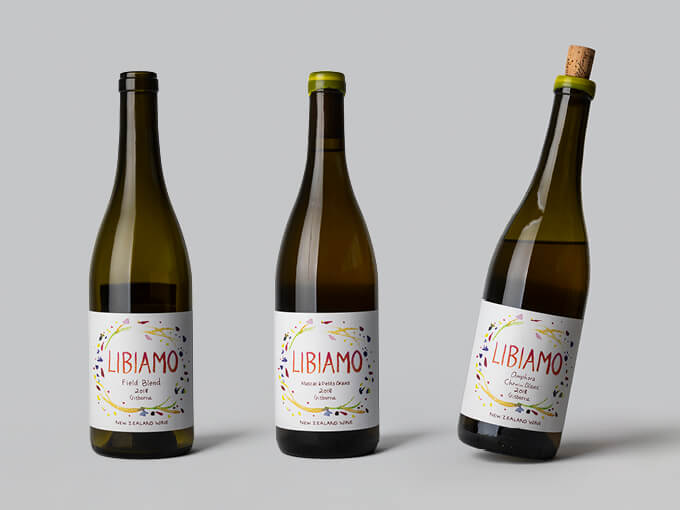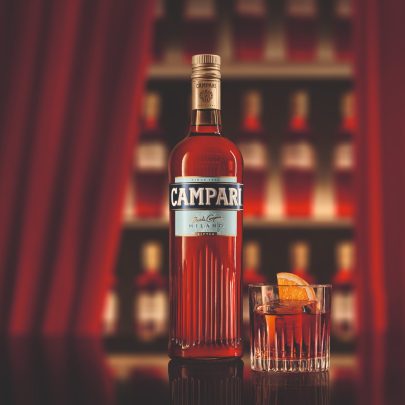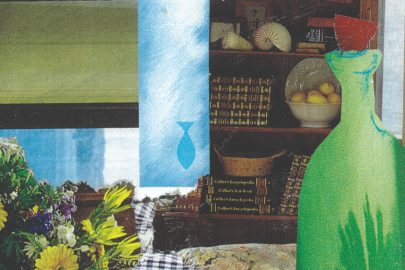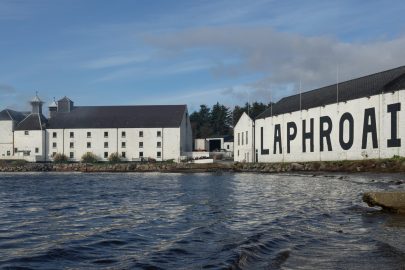Oct 1, 2019 Drinks
Three Gisborne wines made using ancient (yet contemporary) techniques.
When you first start to hear people talking about natural wine, one of the first questions it implies is, “If this is natural, is other wine unnatural?” I asked the same thing when, a couple of years ago, I first tasted a wine from Libiamo — the younger-generation sub-label of New Zealand wine’s organic and biodynamic pioneers Millton.
While Libiamo doesn’t label itself as such, in taste, texture, technique and (let’s be honest) aesthetic, it’s very much in line with what we’ve come to loosely categorise as ‘natural wine’. So if Libiamo is ‘natural’, what are the Millton wines? Organic? Sure. Biodynamic? Yes. But natural? Conventional? Industrial?
These questions reappeared while drinking Libiamo’s three recent 2018 releases — a blend of four white grapes; a muscat à petits grains; and a chenin blanc fermented in a clay amphora like the ancient Greeks did — all hand-picked, all skin-fermented and all, as the natural-wine mantra goes, with ‘nothing added, nothing taken away’.
The Field Blend ($40) of viognier, gewürztraminer, riesling and muscat is the colour of cloudy apple juice mixed with hung-over urine (sorry, but it’s true!) and smells like the remnants of a bottle of cider and summer fruit left in a school lunch box. More than most wines, it tastes precisely of what it is: fermented grape juice, unadulterated yet finely balanced. While not carbonated, its slight electric fizz dances around your mouth, building an anticipation of a numbness that never arrives (unless you drink a lot of it — it is only 11.5%, after all). It’s bright, bold and dry with strong, wiry tannins.
READ MORE: The new natural: Decoding the ‘natural’ wine boom
The Muscat à Petits Grains ($40) is softer and rounder, reminiscent of lightly spiced winter fruits, with less of the acidity or tannic lankiness of the Field Blend. Of the three, it’s the wine most likely to be described as “glou-glou” (translation from the French: “glug-glug”), a natural wine term referring to wines that are light, acidic, but fruit forward and easy to drink or (*cringe*) “smashable”. It’s delicious and comforting, but if I spend $40 on a bottle of wine, I tend to be looking for something to savour, not devour.
The Amphora Chenin Blanc ($45) is such a wine. Golden and cloudy, it smells of lime, dead flowers, olive pits and sea salt. And it tastes salty, too. At least at first. On the advice of Millton’s website, I drank this bottle over the course of a few nights and was rewarded for the restraint. What began as bright and taut, focused and zippy, opened up more with each day, ripening, softening and deepening, its citrus fruits composing into some kind of savoury honey. I drank it in winter, but it tasted of autumn. A wine to return to, over and over again.
It can be no coincidence that my favourite Libiamo wine is made of grapes from the same vineyard as my favourite Millton wine — the Te Arai Chenin Blanc. While one is made with techniques that are paradoxically ancient yet contemporary, and the other made with techniques that are modern yet conventional, both show that two completely different wines can be made from fruit grown in the same place and express their somewhereness. After all, grapes don’t want to become wine. They want to be eaten by birds and have their seeds spread far and wide. Even ‘natural’, ‘low-intervention’ wines are still made, just made differently. And these Libiamo wines are made beautifully.
This piece originally appeared in the September-October 2019 issue of Metro magazine, with the headline “Nature, enter me”.






